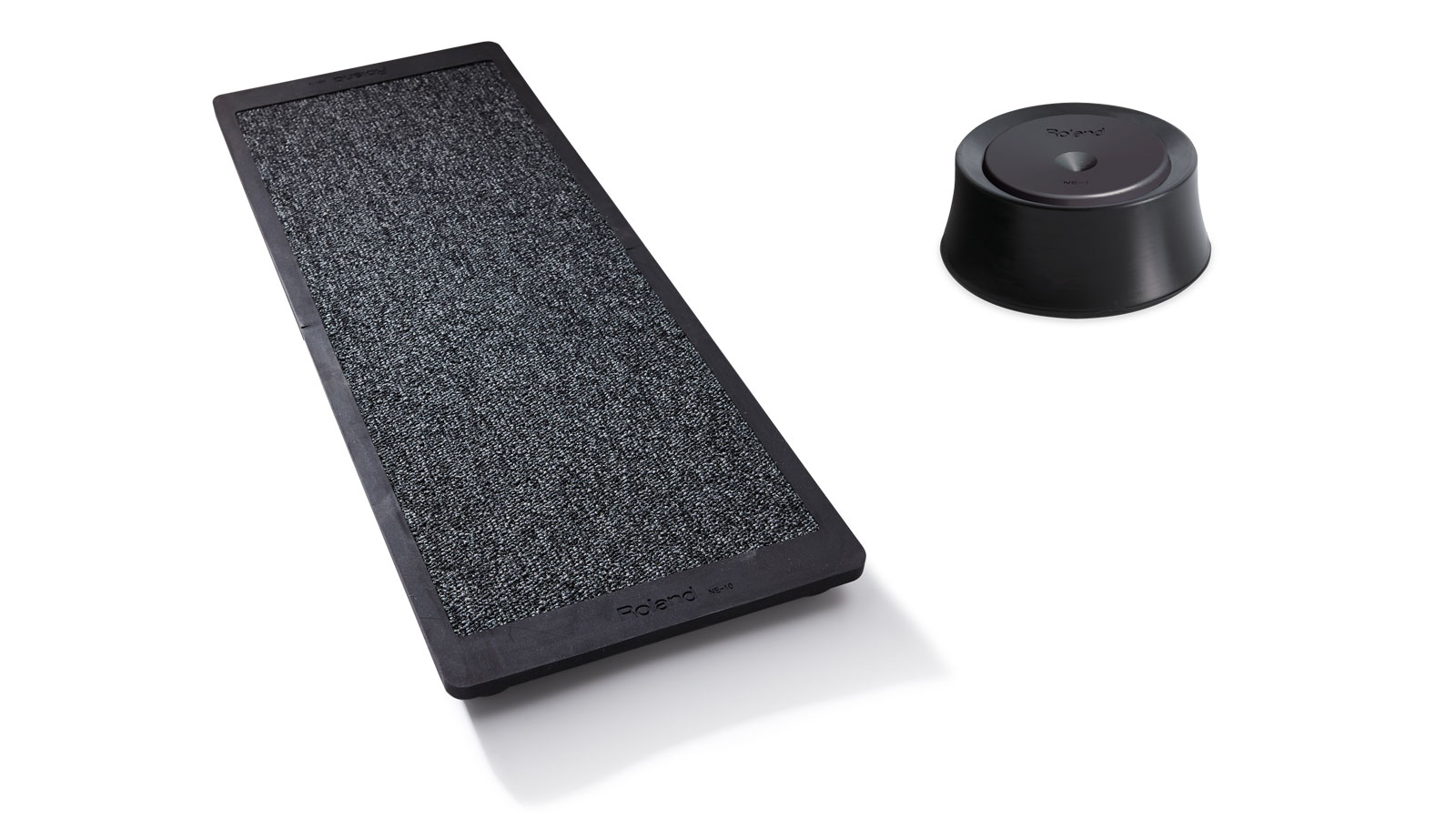MusicRadar Verdict
Your neighbours and cohabitants will thank you, even if your wallet won't.
Pros
- +
If you've already built a DIY platform similar to the one mentioned, you probably won't notice much of a difference in noise. That said, the Noise Eaters are a much more stable, time-effective and aesthetically pleasing solution.
Cons
- -
The cost soon adds up.
MusicRadar's got your back
Hello, I'm your friendly neighbourhood noise abatement officer!" That's the greeting that every drummer dreads, and while e-drums with mesh heads have gone a long way to help reduce the ambient noise of your practice sessions, they're still capable of making a racket that will end in over-the-fence wars with neighbours, or irritating the people you live with.
Roland's new Noise Eater NE-1 and larger NE-10 solutions look to solve this even further. You see, in the same room as your kit, you're most likely to hear the sound of your sticks hitting the pads.
Go downstairs or next door however, and you'll realise that the vibrations from your stand and pedals run through floorboards and joists to create a low end rumble worse than a nightclub toilet.
Build
"Roland says that both of these products will reduce noise by up to 75 percent"
The solution to kill these offending vibrations is to decouple your kit from the floor. This reviewer has first-hand experience of this.
After fielding some colourfully-put complaints from a neighbour suggesting he didn't appreciate the subtleties of the heel-toe technique, we opted to build the well-known 'tennis ball platform'; nine tennis balls sandwiched between two MDF platforms to absorb the vibrations.
Roland's offering is somewhat more professional looking. The NE-1 is a dual-layered rubber cup that sits under your rack's legs. The inner layer moves, acting like suspension to cushion the rumbles. Next is the NE-10 - a half-board/half-mat measuring 21cm wide by 54cm long, and designed for your pedals to sit on.
Underneath are a dozen dome-shaped pieces of rubber (imagine a squash ball cut in half). The NE-10 is deceptively heavy too, thanks to its solid metal core (carpeted on top, rubber on the bottom).
Want all the hottest music and gear news, reviews, deals, features and more, direct to your inbox? Sign up here.
Hands on
This review was actually carried out on pine floorboards, though, and the difference within the room between using the Noise Eaters, then placing the pedals and stand directly on the floor is actually immediately noticeable.
Given the nature of the problem the Noise Eaters are trying to solve, however, it's actually quite tricky for the player to tell just exactly what is happening outside of the room.
Roland says that both of these products will reduce noise by up to 75 percent. Our evaluation can't be that scientific, but it did reduce Mrs Reviewer's complaints from a hostile, "Shut the f**k up!" to a more favourable, "I can't really hear it." We'll settle for that.
The only drawback is the cost. Hi-hat pedals aren't really a problem, so if you're using a single bass drum pedal you'll likely only need one NE-10. Add three our four (depending on your rack) NE-1s and you're looking at nearly £200.

Stuart has been working for guitar publications since 2008, beginning his career as Reviews Editor for Total Guitar before becoming Editor for six years. During this time, he and the team brought the magazine into the modern age with digital editions, a Youtube channel and the Apple chart-bothering Total Guitar Podcast. Stuart has also served as a freelance writer for Guitar World, Guitarist and MusicRadar reviewing hundreds of products spanning everything from acoustic guitars to valve amps, modelers and plugins. When not spouting his opinions on the best new gear, Stuart has been reminded on many occasions that the 'never meet your heroes' rule is entirely wrong, clocking-up interviews with the likes of Eddie Van Halen, Foo Fighters, Green Day and many, many more.
